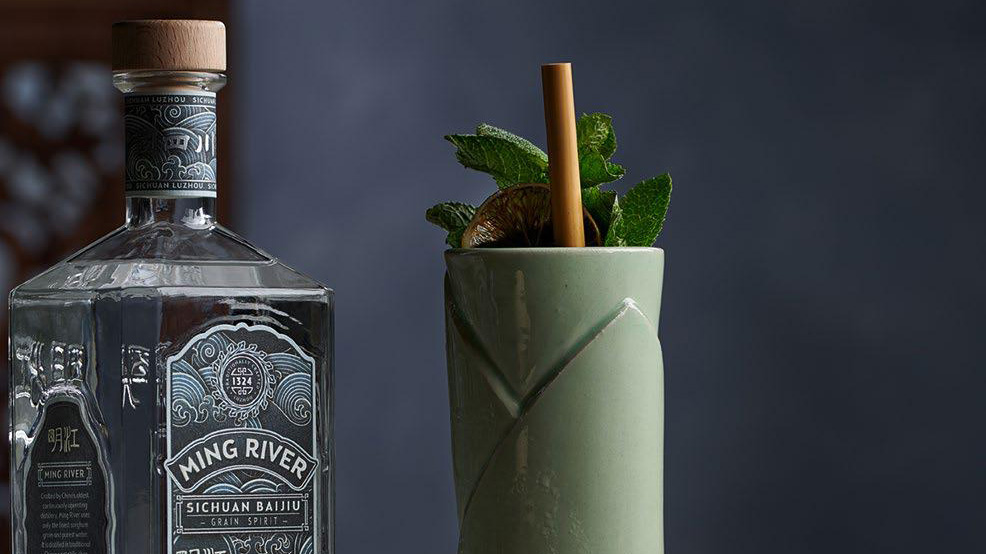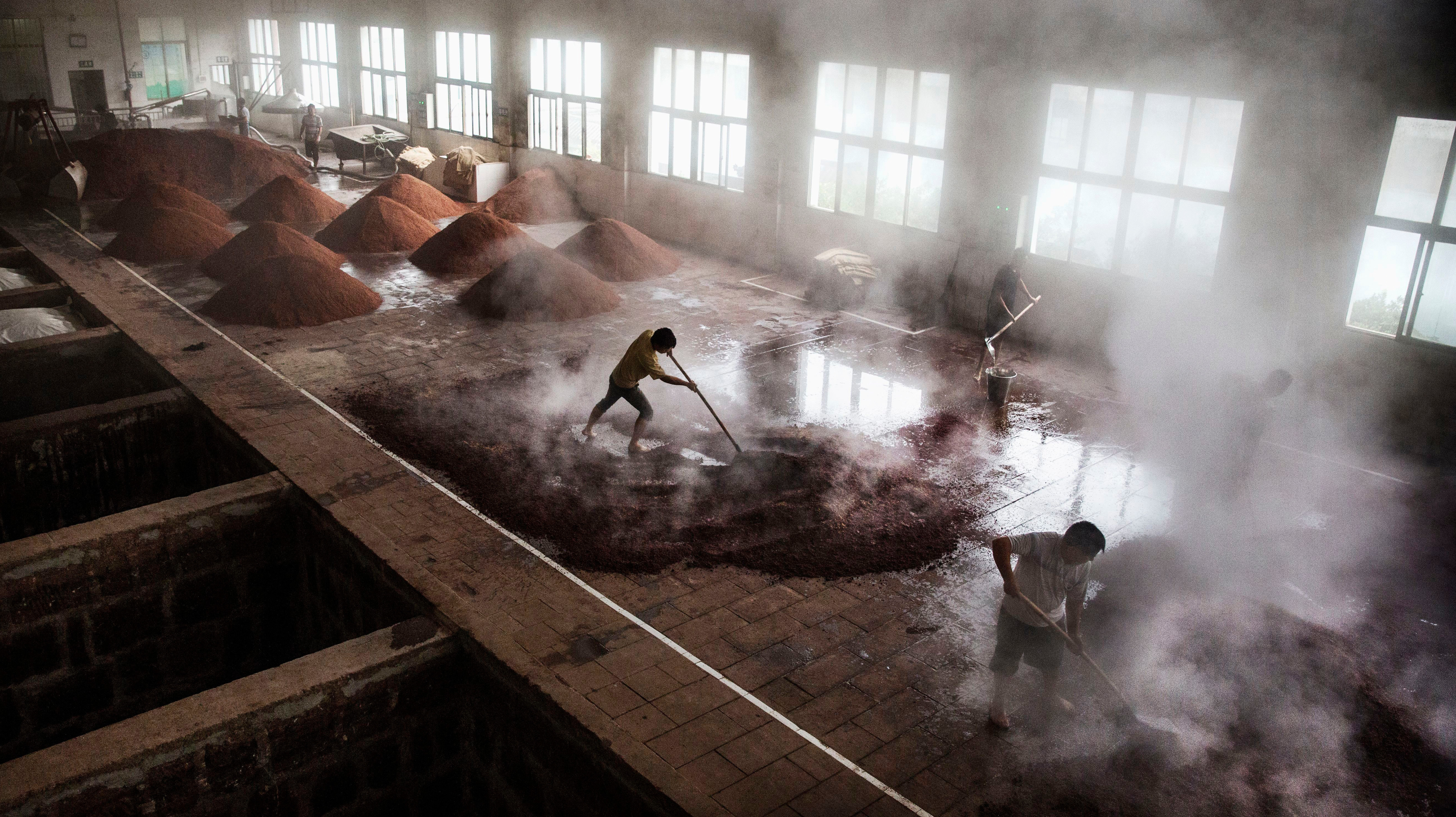Everything You Need To Know About Baijiu, China's Funky And Complex Crown Jewel Spirit
We may receive a commission on purchases made from links.
Welcome to Gateways To Drinkery, where The Takeout offers an entry-level course on our favorite libations, and some suggestions on where to start drinking them.
Baijiu
The lowdown: Pronounced bye-gio (like the first half of "Giovanni"), this grain-based spirit from China has a mixed reputation here in the States—if it has a reputation at all. While it's been distilled since somewhere between the 14th and 17th centuries in China, it only began making its way to the States when America and China normalized diplomatic relations in 1979. And until just a few years ago, it was hardly ever marketed to people who weren't ethnically Chinese or visiting here from China.
Baijiu isn't just one spirit. It's a category, like whiskey or wine or beer, but all baijiu are made from grain and fermented a natural harvest of yeast, mold and bacteria called qu. (So your friend who didn't like the one sip of baijiu they had on a vacation to China shouldn't turn you off from the entire range of flavors under its umbrella.) Though there are roughly a dozen grain-based spirits that could be called baijiu, four main types comprise about 95% of the market, according to Derek Sandhaus, cofounder of Ming River Baijiu and author of Baijiu: The Essential Guide to Chinese Spirits. Each comes from a different part of China, and because baijiu is nearly always consumed with food, each type of baijiu complements its regional style of cuisine:
- Rice aroma: Unlike most other baijiu, rice aroma's raw ingredients and the microorganic culture that sparks its fermentation all come from rice rather than sorghum. It's a relatively young baijiu, fermented for just a few days and distilled between one and three times. It has a mild, slightly floral and sweet flavor, "somewhere between a mild sake and a vodka in terms of its flavor profile," Sandhaus says. Rice aroma baijiu comes from southeast China, where it melds well with steamed dumplings, seafood, and more-delicate dim sum dishes.
- Light aroma: This baijiu is made from sorghum, fermented for about a month, and is usually quite strong. Light aroma is generally bottled at about 56-65% ABV, which makes sense given the cold climate and hearty meat-potatoes-and-vinegar cuisines of its home territory of northern China. "The flavor tends to be pretty dry and crisp with a light dried fruit, apricot kind of sweetness, a bit more herbaceous and floral," says Sandhuas. "When it's done well I think it's comparable to a grappa in terms of the aesthetic experience of drinking it."
- Strong aroma: Also made from sorghum, strong aroma baijiu is fermented for two or three months, but in a continuous manner in which 75% of the previous batch of mash will be in the next round of mash. It's also fermented in mud pits dug out of the ground which, over time, absorb the microorganisms that ferment the spirit, roughly similar to the way muck pits add additional esters and complexity to certain types of Jamaican rum. (The older the pits, the better the flavor, it's thought.) Hailing from Sichuan province, strong aroma baijiu stands up to that region's spicy, garlic- and chile-heavy cuisine with overripe, bright tropical fruit notes and licorice. "There's also a certain funky, cheesy, barnyard-y weird note that really ties the room together," Sandhaus says. This style comprises about 70% of the baijiu market in China.
- Sauce aroma: The most intense of all, sauce aroma baijiu hails from the Guizhou area in southwest China. It's primarily made from sorghum but can have other grain components as well, and is fermented in stone pits. It undergoes a sort of continuous fermentation, in which distillers add fresh grain during the the first two distillations, then re-ferment the mash after they distill it, about eight total times over the course of the year. The final product, a blend of multiple batches, is an intensely layered umami bomb the can contain sesame, soy, mushroom, blue cheese, nuts, caramel, coffee, dark chocolate flavors. The most important producer of this type of baijiu is Kweichow Moutai, a distillery The Wall Street Journal reports is valued at $162 billion, more than Diageo and Pernod Ricard combined. Its standard-issue sauce aroma baijiu retails for about $350 per half-liter bottle.
The taste: Given the diversity of styles above, it's safe to say baijiu can range in flavor from delicate to intense. Annie Beebe-Tron, who collaborates on the bar program at Macanese restaurant Fat Rice in Chicago, suggests that drinkers simply approach baijiu with an open mind. Beebe-Tron has two baijiu cocktails on the menu at Fat Rice and sister cocktail bar The Ladies Room, and offers a handful of other bottles by the individual pour.
"If you like really complex flavors in food, why not in spirits?" they say. "I use baijiu in cocktails when I need a non-smoky, non-minerally, earthy funk." They realize baijiu isn't the most approachable spirit, but given the somewhat adventurous spirit Fat Rice's cuisine requires, most guests are at least open, if not enthusiastic, about tasting something completely different.
Sandhaus emphasizes keeping an open mind when trying baijiu, and trying to appreciate its flavor in light of the unique way it's distilled: "The flavors you might view as undesirable are desirable in other context. It's entirely culturally constructed, what is and isn't a good alcohol."

Possible gateway: Most restaurants or bars that serve baijiu present it in a cocktail, in addition to any by-the-pour bottles they may have. A cocktail may make the flavors more approachable for newbies, but Beebe-Tron cautions against trying to mask them; after all, you want a baijiu cocktail to taste like baijiu. One cocktail on the current menu is called The Side Hustle, made with Guotai Baiju, Punt e Mes, two St. George gins and orange bitters. "It's a good Manhattan for adventurous drinkers. It has that silky, stirred complexity, with two different really big gins and a bitter amaro."
Sandhaus says tiki cocktails are also a logical playground for baijiu because they make use of the funkier end of the rum spectrum. "They typically involve tropical fruit and you have both of those characteristics [fruit and funk] within strong aroma baijiu to begin with," he says. DrinkBaijiu.com's cocktail recipe of summer is simple enough highball for even home bartenders to make: It's an ounce of strong-aroma baijiu, an ounce of sweet red vermouth, topped with tonic water.
Next level: Given the potential for savory, funky flavors, nearly all sorghum-based baijiu would be considered pretty next-level by American drinkers. But, Beebe-Tron notes, that was also true of mezcal, and America went totally nuts for that smokey, complex Mexican spirit. They're not predicting a boom in baijiu the way mezcal has seen, but they do applaud the growing number of drinkers who view unfamiliar spirits as a gateway to learn about another country's cuisine and culture: "I don't know if they'll be another gold-rush spirit like [mezcal], but I think baijiu will be just in the line-up of creative resources. There are cocktails where you're thinking 'I can't make this without baijiu.'"
If you find straight baijiu too overpowering, Beebe-Tron suggests diluting it with a bit of water. They found baijiu inscrutable the first few times they tried it, until diluting it with a bit of water helped open up the aromas and flavors and allowed them to finally pick out its nuances.
Talk like an expert: Like other aged spirits, vintage bottles of baijiu are some of the most exclusive ways to experience its flavor development. Bottles of Kweichow Moutai are some of the most prized, as they're considered high-status markers in China. At one point the government decreed that all state dinners would serve baijiu from that particular region, which cemented its association with the Chinese ruling class. "When China became a free-market economy, everyone who had any money wanted this product," Sandhaus says. "And in a country of that many people, supply and demand pushes that price up fast."

